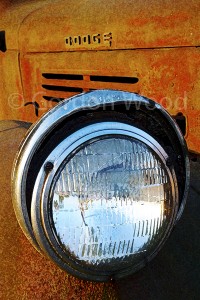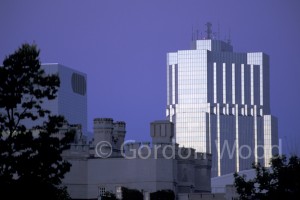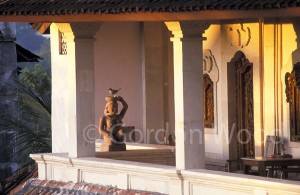Here’s the typical professional travel/landscape/fashion photographer’s day:
1. Get up well before dawn and drive to a location scouted the day before.
2. Shoot as the sun comes up.
3. Go back to the hotel by about 8 or 9 am for breakfast.
4. Do some personal tours in town.
5. Have a late lunch.
6. Go back to the hotel for a long siesta.
7. Start out late afternoon and scout locations for tomorrow.
8. Find a place to have dinner.
9. Get to next location for the evening’s shoot well before sunset.
10. Go to bed early, rinse and repeat.
Huh? What happened to partying until dawn? There’s always the afternoon for taking pictures, isn’t there?
Well, no. The reason that pros avoid mid-day sun is that it provides the coldest light and the worst shadows imaginable. With the sun directly overhead, the colour temperature is at its highest (counter-intuitively, perhaps), resulting in a very bluish light. As a result, colours look washed out and take on a cold cast.
Alternatively, shooting in the magic hour around dawn or dusk provides a warm (low colour temperature) orange-red light that increases colour saturation and contrast. The reason is that when the sun is low in the sky, it is filtered through more of the earth’s atmosphere because of the low ‘grazing’ angle. Shadows are also longer, resulting in more drama. Particularly at the evening magic hour, a clear sky also takes on a deep inky blue hue when you shoot facing away from the sunset. Is there any wonder that commercials, particularly for automobiles, are shot around magic hour?
Now, sometimes logistics dictates that a shoot has to be done in the middle of the day. Cinematographers often get around this by using warming filters and light modifiers. These modifiers may be elaborate tents to diffuse the harsh overhead sun and eliminate hard shadows, or they may be coloured reflectors aimed at the subject to modify the apparent colour temperature. If you’re faced with this situation and you need to get the shot before the bus leaves for the next tourist trap, consider taking filters (polarizing, warming and graduated, for example) and maybe a photographer’s umbrella or reflector to help mitigate the lousy light.
Best advice: consider a car rental to allow you to scout freely and return to a location when the light is at its best. And, you’ll get to discover more about your host country as you take the back roads to your next shoot.
 Have a look at these shots, taken during Magic Hour, and see if you can spot why it’s the best time for photography.
Have a look at these shots, taken during Magic Hour, and see if you can spot why it’s the best time for photography.
 Have a look at these shots, taken during Magic Hour, and see if you can spot why it’s the best time for photography.
Have a look at these shots, taken during Magic Hour, and see if you can spot why it’s the best time for photography.
